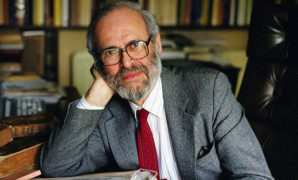Geza Vermes, a translator of the Dead Sea Scrolls and renowned for books exploring the Jewish background of Jesus, has died aged 88.
Dr Vermes had an early interest in the Dead Sea Scrolls and published the first English translation of the scrolls in 1962.
The scrolls gave an insight to Jewish practices and thought at the time Jesus was preaching, and they informed a series of books by Dr Vermes on the historical Jesus.
The first, Jesus the Jew, was published in 1973, followed by The Authentic Gospel of Jesus (2003), a commentary on all of the sayings attributed to Jesus in the gospels of Matthew, Mark and Luke.
His last book, Christian Beginnings: From Nazareth to Nicaea, AD 30-325, published last year, was Dr Vermes’ account of the development of Christian doctrine up to the formulation of the Nicene Creed.
In a review of the book, Rowan Williams, the former archbishop of Canterbury, praised Mr Vermes as “the unchallenged doyen of scholarship in the English-speaking world on the Jewish literature of the age of Jesus, especially the Dead Sea Scrolls”.
Born in Mako, Hungary, in 1924, he was six when his parents converted to Roman Catholicism.
Following the war, he moved to Belgium and a seminary run by the Congregation of Our Lady of Sion, founded by two Jewish converts, and gained a doctorate from the Catholic University of Louvain.
He left the priesthood and the Catholic Church in 1957, remarking later that his studies of Jesus had reconverted him to Judaism.
Following a stint at Newcastle University from 1957-65, he moved to Oxford. After retirement in 1991 he directed the Oxford Forum for Qumran Research at the Oxford Centre for Hebrew and Jewish Studies.
Although he joined a liberal synagogue, he preferred the garden of his Oxford home to religious ceremonies.
“You know, I’m not a great one for synagogues or other places of worship,” he said in a 2008 interview with the Guardian. When I want to listen to that little voice, I go out there for a walk.”
His first wife Pamela died in 1993. He is survived by his second wife, Margaret.
